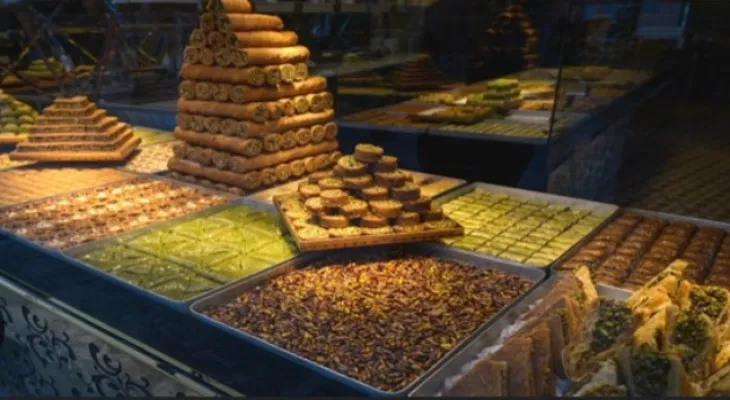Search here
Newspaper
Search here

Arab Canada News
News

Published: March 29, 2023
Most fasting people tend to overeat sweets during the month of Ramadan, to provide the body with some of the sugar it lost during fasting hours.
Delicious sweets rich in sugars and fats form a basic pillar on Ramadan tables, as fasting people are unable to resist them as a reaction to their body, after their sugar levels were low throughout the day, ending up exceeding the medically recommended limit for sweets consumption.
In the same context, nutrition specialist Hadeel Bou Said says in a talk that the health benefits of fasting are achieved only when the diet is low in sugars and fats, high in fiber and vegetables, moderate in fruit, pointing out that eating sweets immediately after Iftar causes many risks, reflected in annoying digestive disorders such as constipation, bloating, and gas, as well as causing a sharp rise in blood sugar levels, which may lead to headache, blurred vision, and fatigue.
The risk of sweets immediately after Iftar:
According to Bou Said, who runs the "Shift Your Diet" page, when sweets are eaten immediately after the Iftar meal during Ramadan, their sugar and calorie content accumulates in the body as fat, which later leads to weight gain or severe obesity, in addition to increasing the chances of intestinal inflammation, and also placing a burden on the liver.
Harmful types of sweets:
Bou Said explains that harmful sweets during Ramadan are those fried or containing high amounts of sugar and syrup, or those that contain a lot of fat, such as Ramadan Kleiaj, fried Qatayef, Mafrouka, Baklava, Ramadan Meshabak, Namoura, Aish Al Saraya, sweets containing burnt cream and chocolate cream, in addition to Kunafa and tarts that contain butter and large amounts of sugar.
The problem with Ramadan sweets:
For her part, the nutrition and health education specialist says that the problem with sweets, especially Ramadan ones, is that they contain high percentages of flour, sugar, ghee, oils, and various fillings of cream and nuts, making them full of calories. For example, a single piece of "Ramadan Kleiaj" contains 400 calories.
The best timing to eat sweets:
Bou Said emphasized that fasting people should not eat sweets at the beginning of the main Iftar meal, as eating them at this time leads to overeating due to hunger. She also pointed out that sweets should not be eaten immediately after Iftar, as this leads to indigestion and feeling bloated. Therefore, the best time to eat sweets is two or three hours after Iftar, and in limited quantities, followed by some physical activity.
For a healthy body:
According to Bou Said, contrary to what many believe, Ramadan sweets are no longer forbidden for those who want a healthy body, as they can be consumed in moderation with some modifications that do not greatly affect their taste. For example, it is better to avoid buying sweets from stores and instead prepare them at home to control the ingredients and quality, and reduce the number of calories.
To reduce calories:
Bou Said explains that one can, for example, replace fried Qatayef with grilled ones, reducing the calorie content from 360 to about 250 calories depending on the type of filling. Also, the amount of syrup added to sweets can be reduced, or diet syrup can be used, or replaced with molasses or honey if possible, in addition to replacing fillings containing full-fat cheese with low-fat cheese, and not adding sugar to the filling but replacing it with dates or honey. She points out that Ramadan sweets are an important part of our Arab traditions, so these steps help us enjoy the traditions while taking care of our health in terms of quality and quantity.
Comments